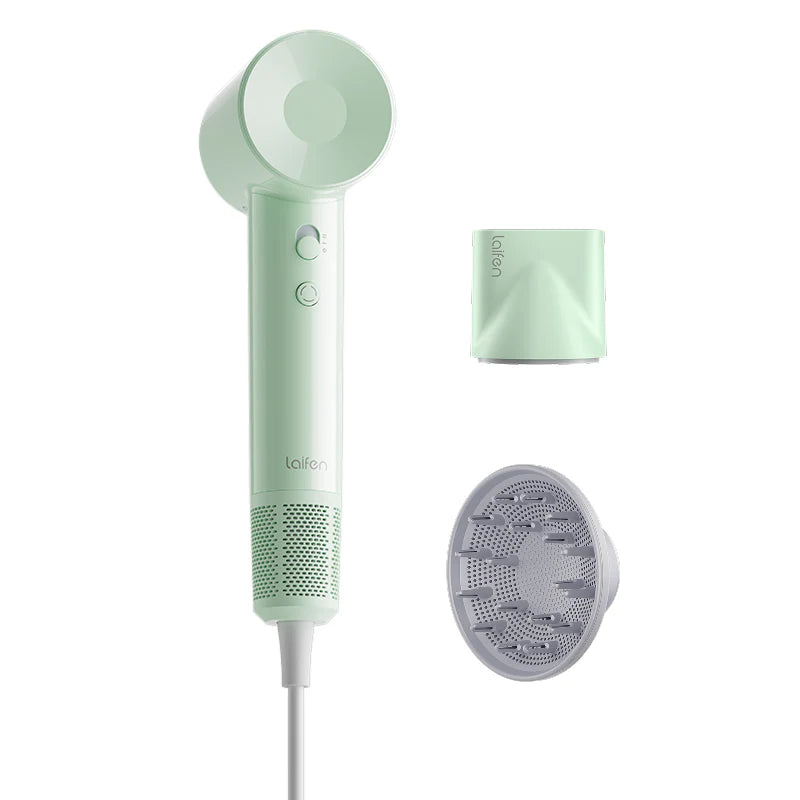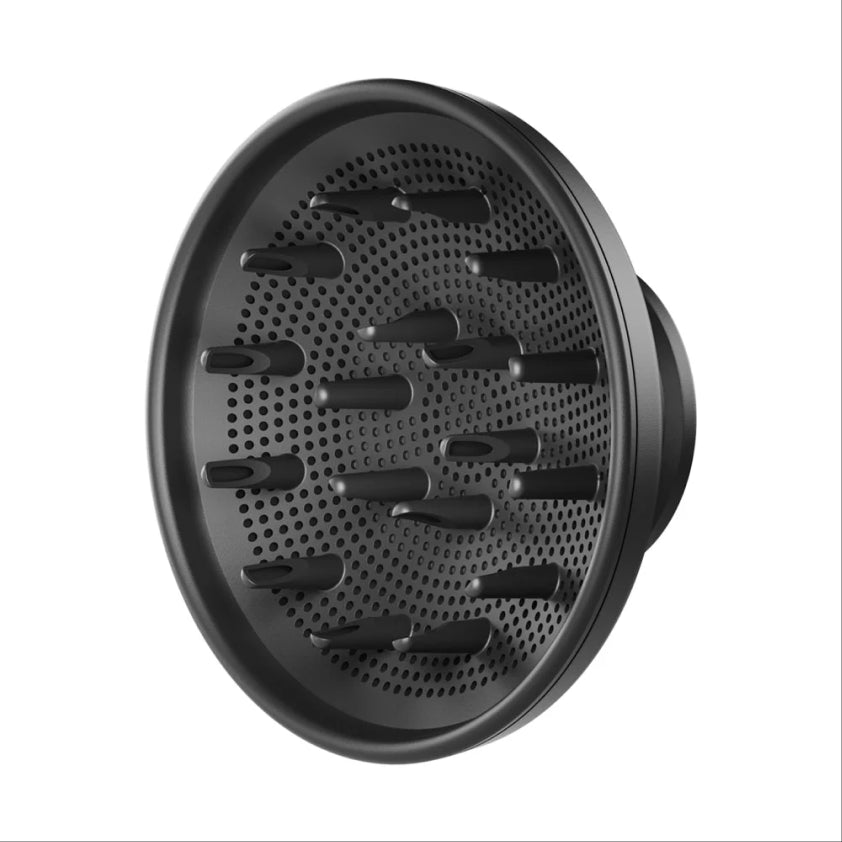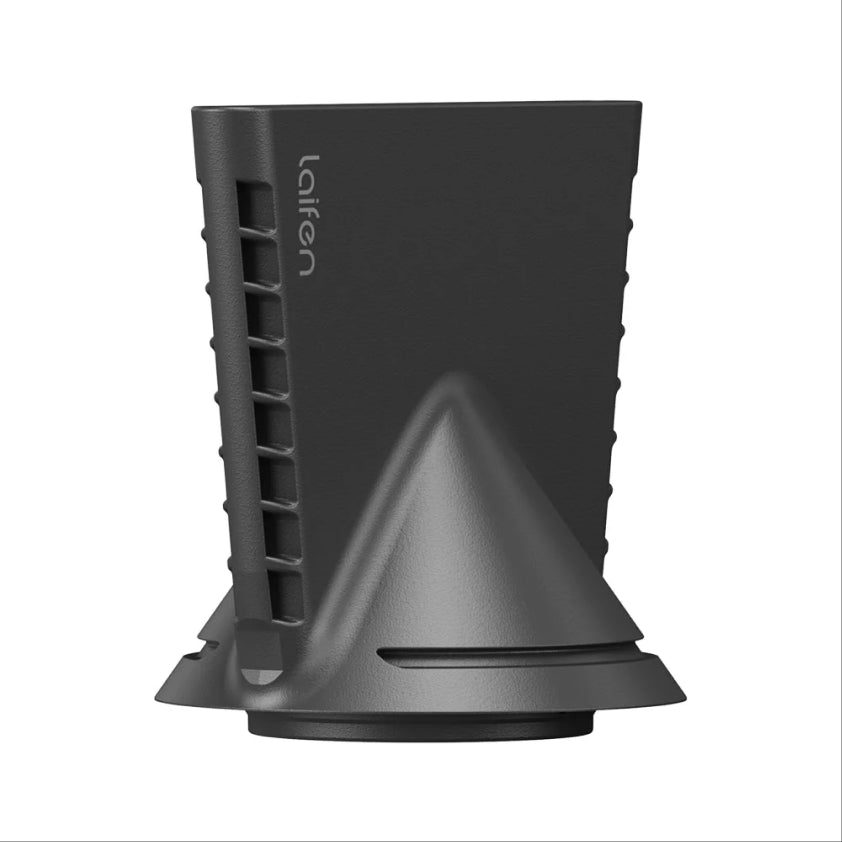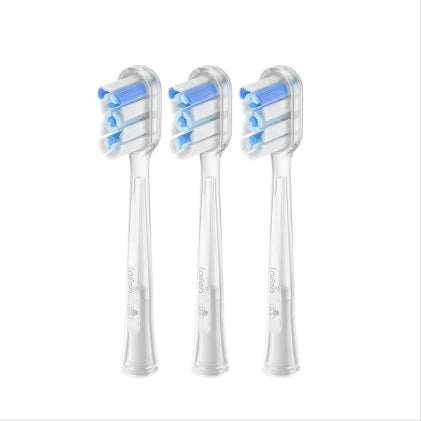
In this article
- Qu'est-ce qu'une brosse à dents oscillante ?
- Technologie de nettoyage buccal – Brosse à dents oscillante
- Une brosse à dents rotative est-elle meilleure ?
- Quelle brosse à dents électrique est la meilleure ?
- Que faut-il prendre en compte lors de l’achat d’une brosse à dents oscillante
- Qu'est-ce qu'une brosse à dents oscillante ? - FAQ
Les brosses à dents oscillantes utilisent une technologie de nettoyage innovante pour assurer une hygiène bucco-dentaire optimale. Les mouvements rotatifs de la tête de brosse éliminent efficacement la plaque dentaire, améliorant ainsi considérablement la propreté générale de vos dents. Cet article explore les avantages des brosses à dents oscillantes, leur fonctionnalité et pourquoi elles sont plus efficaces que les brosses manuelles traditionnelles. Nous soulignerons également les éléments à prendre en compte lors de l'achat d'une brosse à dents oscillante.
Qu'est-ce qu'une brosse à dents oscillante ?
Une brosse à dents oscillante est un appareil moderne qui déplace la tête de la brosse d'avant en arrière à un rythme rapide. Sa petite tête rotative assure un nettoyage en profondeur en éliminant efficacement la plaque dentaire, même le long des gencives. Ces mouvements améliorent l'hygiène bucco-dentaire au-delà des capacités d'une brosse à dents manuelle ordinaire.
Par rapport au brossage manuel, la technologie de nettoyage avancée d'une brosse à dents oscillante facilite l' élimination de la plaque dentaire , offrant ainsi un nettoyage plus approfondi. De plus, de nombreuses brosses à dents oscillantes proposent différents modes de nettoyage pour répondre aux besoins de chacun. Par exemple, les utilisateurs peuvent opter pour un mode sensible ou un mode massage, entre autres.
Caractéristiques supplémentaires des brosses à dents oscillantes
- Contrôle de la pression : Aide à prévenir le brossage excessif qui peut endommager les gencives et l'émail.
- Connectivité Bluetooth : suit les habitudes de brossage et fournit des commentaires pour améliorer la technique de brossage.
- Têtes de brosse interchangeables : Différentes têtes pour des besoins spécifiques, tels que les gencives sensibles ou le blanchiment.
Choisir la bonne brosse à dents oscillante
Avec de nombreux modèles disponibles, il est essentiel de prendre son temps pour choisir la bonne brosse à dents. Évaluez vos besoins dentaires spécifiques (modes de nettoyage sensibles, options de massage ou fonctions de suivi) et choisissez une brosse dotée des fonctionnalités qui conviennent le mieux à votre routine et à vos besoins en matière de santé bucco-dentaire.
Technologie de nettoyage buccal – Brosse à dents oscillante
Les brosses à dents oscillantes utilisent une technologie de nettoyage buccal avancée, gagnant la confiance de nombreux utilisateurs dans le monde entier. Ces brosses effectuent des mouvements rapides dans des directions opposées (dans le sens des aiguilles d'une montre et dans le sens inverse), ce qui leur donne leur nom : brosses à dents oscillantes. La plaque et les dépôts sont efficacement éliminés des dents et, surtout, ils sont éliminés rapidement. Ce mouvement permet également de nettoyer les zones difficiles d'accès entre les dents et le long des gencives.
Par rapport aux brosses à dents manuelles traditionnelles, les brosses à dents oscillantes offrent des performances de nettoyage supérieures. Votre hygiène bucco-dentaire peut grandement bénéficier de leur utilisation régulière. Au fil du temps, ces brosses aident à réduire l'accumulation de plaque dentaire et à prévenir les problèmes de gencives.
Comment utiliser une brosse à dents oscillante
L'utilisation d'une brosse à dents oscillante est généralement simple. Suivez ces étapes pour garantir un nettoyage complet à chaque fois :
- Appliquer le dentifrice : Commencez par appliquer une quantité de dentifrice de la taille d’un petit pois sur la tête de brosse.
- Allumez la brosse à dents : allumez la brosse à dents. Vous pouvez choisir votre mode de nettoyage préféré, généralement entre un mode standard ou sensible.
- Positionnez la tête de brosse : placez la tête de brosse à un angle de 45 degrés par rapport à vos dents et vos gencives.
- Laissez la brosse faire le travail : laissez la brosse à dents osciller d'elle-même. Il n'est pas nécessaire de frotter manuellement : laissez simplement la brosse glisser doucement sur vos dents.
- Brossez soigneusement : Déplacez lentement et uniformément la brosse sur toutes les surfaces des dents. Veillez à nettoyer entre les dents et le long des gencives.
- Utilisez le minuteur : profitez du minuteur intégré, qui garantit que vous vous brossez les dents pendant les deux minutes recommandées. De nombreuses brosses à dents oscillantes émettent un signal toutes les 30 secondes pour vous rappeler de changer de zone de brossage.
- Éteindre et rincer : Éteignez la brosse à dents et rincez-vous la bouche avec de l’eau.
- Nettoyer la tête de brosse : rincez soigneusement la tête de brosse sous l'eau courante et laissez-la sécher à l'air libre. Il est également recommandé de remplacer la tête de brosse tous les trois mois.
Une brosse à dents rotative est-elle meilleure ?
Cette question n'a pas de réponse simple. Vos besoins et préférences personnels sont des facteurs cruciaux à prendre en compte lors de l'achat d'une brosse à dents. Ceux-ci doivent toujours être prioritaires.
Les brosses à dents rotatives sont dotées de têtes qui se déplacent en cercle, tandis que les modèles oscillants se déplacent d'avant en arrière. Les deux technologies présentent leurs propres avantages et inconvénients.
Les brosses à dents rotatives permettent de nettoyer plus en profondeur entre les dents et le long des gencives. Le mouvement circulaire est particulièrement efficace pour éliminer la plaque dentaire tenace. Ces modèles sont particulièrement adaptés aux personnes portant un appareil dentaire.
En revanche, les brosses à dents oscillantes offrent un nettoyage plus doux. Si vous souffrez de dents sensibles ou de problèmes de gencives, une brosse à dents oscillante peut être plus adaptée. Le mouvement de va-et-vient aide également à réduire l'inflammation des gencives et assure un nettoyage en profondeur.
Pour mieux comprendre les deux technologies, voici un tableau résumant les avantages de chaque modèle :
| Avantages des brosses à dents rotatives | Avantages des brosses à dents oscillantes |
|---|---|
| Nettoyage en profondeur entre les dents | Doux pour les gencives qui se rétractent |
| Élimination efficace de la plaque dentaire tenace | Réduit l'inflammation des gencives |
| Idéal pour les personnes portant un appareil dentaire | Convient aux gencives sensibles |
| Assure un nettoyage intense | S'adapte aux besoins individuels en matière de soins bucco-dentaires |
Que choisir : une brosse à dents rotative ou oscillante ?
En fin de compte, ce sont vos besoins personnels qui doivent guider votre choix. Ces deux technologies sont d’excellents outils pour les soins bucco-dentaires quotidiens et contribuent au maintien d’une bonne santé bucco-dentaire.
Quelle brosse à dents électrique est la meilleure ?
La brosse à dents oscillante Laifen Wave est l'une des meilleures brosses à dents oscillantes, réputée pour sa technologie de nettoyage efficace. Son mouvement oscillant assure un nettoyage en profondeur entre les dents et le long des gencives, améliorant considérablement l'hygiène bucco-dentaire.
Cette brosse à dents se distingue par ses performances puissantes et son design convivial . La poignée ergonomique assure un confort d'utilisation, faisant du brossage quotidien une expérience agréable. De plus, la minuterie intégrée vous aide à respecter la durée de brossage recommandée, garantissant un nettoyage optimal.
Une autre caractéristique notable est la longue durée de vie de sa batterie , qui permet une utilisation prolongée sans recharge fréquente. Grâce à ses têtes de brosse facilement remplaçables, la Laifen Wave reste efficace au fil du temps.
Si vous recherchez une brosse à dents fiable et performante , la Laifen Wave est un excellent choix !
Que faut-il prendre en compte lors de l’achat d’une brosse à dents oscillante
Lors de l’achat d’une brosse à dents oscillante, plusieurs facteurs clés doivent être pris en compte pour garantir qu’elle répond à vos besoins en matière de soins bucco-dentaires.
1. Technologie de nettoyage
- Faites attention au type de vibration proposé par la brosse à dents. Certains modèles proposent également des mouvements pulsatoires, qui renforcent l'effet nettoyant.
2. Modes de nettoyage
- Vérifiez les modes de nettoyage disponibles et assurez-vous qu'ils correspondent à vos besoins. Que vous ayez besoin de modes sensibles, blanchissants ou de massage, la brosse à dents doit correspondre à vos objectifs de soins bucco-dentaires.
3. Fonction minuterie
- Un minuteur intégré vous aide à respecter le temps de brossage recommandé de deux minutes. Cela garantit que toutes les zones de votre bouche reçoivent un nettoyage adéquat.
4. Contrôle de la pression
- Certains modèles sont équipés de capteurs de pression qui vous avertissent si vous vous brossez trop fort, évitant ainsi d'endommager les gencives.
5. Autonomie de la batterie et temps de charge
- Recherchez une brosse à dents avec une longue durée de vie de la batterie et un temps de charge raisonnable pour minimiser les temps d’arrêt entre les utilisations.
6. Têtes de brosse
- Choisissez un modèle avec des têtes de brosse facilement remplaçables, car celles-ci devront être remplacées régulièrement pour maintenir leur efficacité.
7. Conception étanche
- Étant donné que les brosses à dents sont utilisées dans la salle de bain, elles doivent être imperméables pour éviter tout dommage potentiel.
8. Marque et qualité
- Optez pour des marques connues pour leur fiabilité et leurs performances, comme la brosse à dents Laifen Wave , qui offre un nettoyage de haute qualité avec une technologie de pointe.
Qu'est-ce qu'une brosse à dents oscillante ? - FAQ
1. Comment fonctionne une brosse à dents oscillante ?
La tête de brosse d'une brosse à dents oscillante se déplace rapidement d'avant en arrière. Ce mouvement permet de déloger et d'éliminer la plaque dentaire plus efficacement.
2. Une brosse à dents oscillante est-elle vraiment meilleure qu’une brosse à dents manuelle ?
Oui, c'est vrai ! Les brosses à dents oscillantes offrent un nettoyage plus efficace et atteignent mieux les zones difficiles que les brosses à dents manuelles.
3. Comment une petite tête de brosse est-elle bénéfique pour la santé des gencives ?
La petite tête de brosse peut nettoyer en profondeur le long de la ligne des gencives, aidant ainsi à réduire l'accumulation de plaque et l'inflammation.
4. Les personnes ayant des gencives sensibles peuvent-elles utiliser une brosse à dents électrique ?
Oui, c'est possible ! De nombreuses brosses à dents électriques proposent un mode sensible, plus doux et idéal pour les personnes ayant des gencives sensibles.
5. À quelle fréquence dois-je remplacer la tête de brosse ?
Il est recommandé de remplacer la tête de brosse tous les trois mois. En cas d'usure visible, elle doit être remplacée plus tôt. Les têtes de brosse sont généralement disponibles auprès du fabricant.
6. Les enfants peuvent-ils utiliser une brosse à dents oscillante ?
Oui, c'est possible ! Il existe des brosses à dents spéciales conçues pour les enfants, qui offrent une expérience de nettoyage plus douce.
7. Quelle est la différence entre une brosse à dents oscillante et une brosse à dents rotative ?
Une brosse à dents oscillante se déplace d’avant en arrière, tandis qu’une brosse à dents rotative se déplace dans un mouvement circulaire.
8. Comment nettoyer correctement la brosse à dents ?
Rincez soigneusement la tête de brosse après chaque utilisation et laissez-la sécher à l'air libre. Évitez de mettre de l'eau dans le manche pour éviter de l'endommager.
9. Une brosse à dents peut-elle améliorer la couleur de mes dents ?
Oui, c'est possible ! En éliminant efficacement la plaque dentaire, une brosse à dents oscillante peut aider à réduire la décoloration, éclaircissant ainsi naturellement vos dents.
10. Les brosses à dents oscillantes sont-elles étanches ?
Oui, la plupart des brosses à dents oscillantes sont étanches et peuvent être utilisées en toute sécurité dans la salle de bain.





















